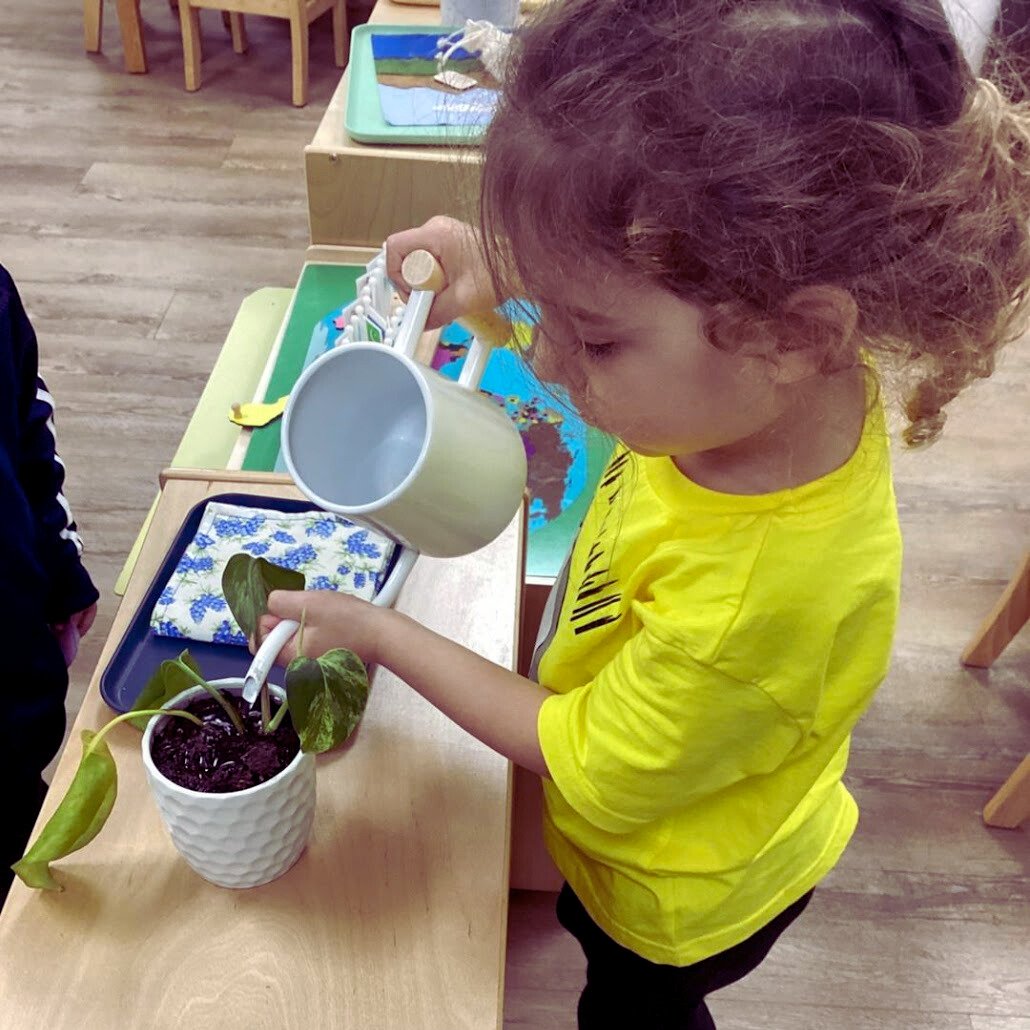Montessori Benefits of Gardening: Cultivating a Green Thumb (and a Few Giggles)
Welcome, brave parents, to the wild world of Montessori gardening, where every day is an adventure in botany, and your child’s muddy footprints become “educational artifacts” on your kitchen floor! Prepare to witness the miracle of life as your little ones nurture seeds into plants, and occasionally try to replant the cat. It’s time to dig in, get dirty, and discover why Montessori gardening is more than just playing in the mud (although that’s a delightful bonus)!
Why Gardening? Because Plants Don’t Talk Back!
In the Montessori approach, gardening isn’t just about growing plants; it’s about growing little humans too! It’s a magical process where children learn patience (waiting for seeds to sprout), responsibility (keeping plants alive), and the harsh realities of life (sometimes plants die, no matter how much you threaten them with time-out).
The Montessori Garden: Where Every Day is Earth Day
A Montessori garden is like a tiny Eden, minus the forbidden fruit (we hope). Here’s what you might find in this chlorophyll-filled wonderland:
- Raised Beds: Perfect for little hands and short attention spans.
- Child-Sized Tools: Because nothing says “I’m helping” like a tiny watering can and adorable gardening gloves.
- Compost Bin: Where banana peels go to party and worms become pets.
- Weather Station: For budding meteorologists who insist on predicting “meatball weather”.
Gardening Activities: More Than Just Digging Holes
Montessori gardening activities are designed to engage children in every aspect of plant care. It’s like a full-time job, but without the paycheck (unless you count cherry tomatoes as currency).
- Seed Planting: Where your child learns the art of burying things and hoping for the best.
- Watering: A lesson in moderation, or “Why Drowning Plants Isn’t a Form of Love”.
- Weeding: Distinguishing friends from foes in the plant world. (No, dandelions are not “nature’s confetti”.)
- Harvesting: The joyous moment when your child realizes vegetables don’t magically appear in the fridge.
- Composting: Turning kitchen scraps into black gold. It’s like alchemy, but smellier.
The Benefits: More Than Just Fresh Tomatoes
While the prospect of homegrown vegetables is exciting (who doesn’t love a slightly misshapen carrot?), the benefits of Montessori gardening go far beyond the produce aisle:
- Sensory Development: Feeling soil, smelling flowers, tasting herbs. It’s a full sensory buffet!
- Fine Motor Skills: Planting seeds and pulling weeds are like a gym workout for tiny fingers.
- Math and Science: Counting seeds, measuring growth, and learning about photosynthesis. It’s STEM education disguised as fun!
- Patience and Responsibility: Plants don’t grow overnight, no matter how much your child yells “GROW!” at them.
- Nutrition: Kids are more likely to eat vegetables they’ve grown themselves. (Results may vary with broccoli.)
- Environmental Awareness: Learning about ecosystems, weather patterns, and why we don’t use the hose to create backyard swamps.
Embracing the Mess: A Parent’s Guide to Surviving Gardening Season
Let’s face it, gardening is messy. But here’s how to embrace it without losing your sanity:
- Accept that dirt under fingernails is a badge of honor. It’s like a tiny manicure, courtesy of Mother Nature.
- Invest in a good laundry pre-treatment. Grass stains are just organic tie-dye, right?
- Remember, mud tracks in the house are just “indoor gardens”. (Repeat this mantra as needed.)
- Keep a “garden outfit” handy. It’s like a hazmat suit, but cuter.
- Learn to love the phrase “It’s just clean dirt!” (Even if there’s no such thing.)
When Nature Calls (or Crawls): Handling Garden “Situations”
Gardening with kids is an adventure. Here are some situations you might encounter, and how to handle them with Montessori-inspired grace (and a healthy sense of humor):
- The Worm Obsession: When your child wants to adopt every worm in the garden. Solution: Start a worm farm. It’s like a petting zoo, but quieter.
- The Over-Enthusiastic Waterer: When your garden becomes a swamp. Solution: Teach the art of “just a little”. And maybe invest in some aquatic plants.
- The Impatient Harvester: When every tomato is picked green. Solution: Introduce the concept of “plant puberty”. Plants need time to grow up too!
- The Accidental Weed Preservationist: When your child refuses to pull weeds because “they’re plants too!” Solution: Designate a “wild” area where weeds can live freely. It’s not laziness; it’s a biodiversity project!
Conclusion: Gardening, Montessori Style
So there you have it, folks – the dirty, delightful world of Montessori gardening. It’s a place where every seed planted is a lesson learned, every weed pulled is character built, and every vegetable harvested is a tiny miracle (even if it looks nothing like the picture on the seed packet).
Remember, in the grand scheme of things, a little dirt under the fingernails and a few extra loads of laundry are a small price to pay for the incredible growth (both plant and personal) your child will experience. Plus, think of all the money you’ll save on therapy when your child can just talk to their plants about their problems!
As Maria Montessori herself probably said (or would have said if she’d spent more time battling aphids), “The garden may be wild, but the Montessori child knows its true value – and has the homegrown zucchini to prove it!”
So go forth, embrace the world of Montessori gardening, and remember: when life gives you weeds, make weed pesto! (Just kidding, please don’t.) Happy gardening, and may your harvests be bountiful and only slightly bug-eaten!

